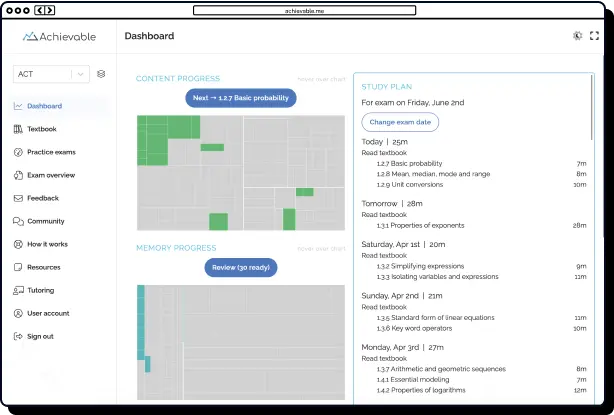
Grad school recommendation letters: Map out your network




Table of contents
- Map and evaluate your network for the strongest support
- How to identify recommenders who can meaningfully attest to your growth
- How to identify recommenders who can provide powerful, detailed endorsements
- How to harness relationship patterns for a compelling grad school recommendation strategy
- How to streamline recommendation letters across multiple grad school applications
- Master application portal requirements to prevent letter submission issues
- AMCAS (Medical School)
- LSAC (Law School)
- Know exactly what each grad program wants from recommenders, don't guess
- How to build a diverse recommender lineup that maximizes your grad school application
This article is part 2 of 7 of our complete guide to graduate school recommendation letters series, where we provide you with expert tips on soliciting powerful recommendations, keeping up with deadlines, and other best practices. In part 2, we provide insights on choosing and approaching recommenders who know you and your work best, whether they be managers, professors, or extracurricular advisors.

Map and evaluate your network for the strongest support
Choosing the right recommenders is one of the most strategic parts of your graduate school application. The strongest letters don’t just come from impressive titles: they come from people who’ve truly seen your evolution as a student, professional, or leader. These are the mentors, professors, and supervisors who can recall specific moments of your growth and speak authentically about your readiness for advanced study. By identifying those who can meaningfully attest to your progress, you’ll ensure your recommendations tell a cohesive and compelling story about who you are and how far you’ve come.
How to identify recommenders who can meaningfully attest to your growth
As a prospective grad student, your goal is to choose recommenders who truly know you and can speak directly to your progress. Don't just go for the biggest titles - prioritize people who have seen your development firsthand. Think about all the professors, supervisors, and mentors you've worked with in classes, labs, jobs, internships, or campus activities. Who has watched you take on new responsibilities or overcome challenges?
Key areas to consider:
- Academic settings: Look for professors or faculty mentors who have taught you in multiple courses, advised your research, or worked with you in student organizations. Ideally, these are people who have known you for at least a year and can share specific stories about your growth as a student and researcher. As Shemmassian Consulting points out, long-term interaction leads to richer, more persuasive recommendations.
- Professional experiences: Consider supervisors or team leads who have managed you on several projects or watched you handle new and challenging assignments. Their recommendations are strongest when they can point to clear examples of your adaptability, leadership, or problem-solving - not just offer generic praise. The Carey Business School highlights that the depth of your relationship matters more than your recommender's job title.
- Extracurricular and volunteer involvement: Think about mentors or coordinators who have seen you move from participant to leader - maybe a club advisor who can describe your shift into an officer role or a nonprofit supervisor who watched you take on more responsibility.
Why do these relationships matter?
- Recommenders who know you well can recall specific incidents and moments that show your skills, like teamwork, leadership, or resilience, rather than just describing you in vague terms.
- Their observations come from regular, meaningful engagement: they saw you present research, work through setbacks, or collaborate with peers.
According to the University of Washington, the best recommendation letters come from people who can give concrete examples of your readiness for advanced study.
So, focus on those who have guided and witnessed your growth - they'll give your application authenticity and depth, far more than a high-profile recommender who barely knows you.
How to identify recommenders who can provide powerful, detailed endorsements
Graduate admissions committees want to see how you stand out, so choose recommenders who can tell your story through clear examples. The most effective letters highlight specific moments, like leading a team through a tough project or helping resolve a conflict, not just broad compliments.
Think about which potential recommenders can recall details: Did someone see you troubleshoot a technical problem, support classmates, or improve after feedback? These anecdotes make your letters memorable.
As you assess your network, ask yourself:
- Depth of relationship: Can this person talk about your work beyond grades or surface-level interactions?
- Anecdotal evidence: Do they remember particular situations - like your role in a challenging project or bringing new ideas to a group?
- Genuine enthusiasm: Are they excited about your achievements, or are they just being polite?
- Firsthand experience with your impact: Can they describe how you made a difference based on what they actually observed?
Someone who can easily share specific stories will write a much stronger recommendation than someone who speaks only in broad generalities.
How to harness relationship patterns for a compelling grad school recommendation strategy
Mapping out your network isn't just about picking individuals. Think about patterns: Are there clusters of faculty in one lab, or several supervisors from one job, who know you well? These clusters can strengthen your case by providing different angles on your abilities.
Admissions committees appreciate a coordinated story. For instance, if several recommenders emphasize your teamwork and initiative in different contexts, it builds credibility. As Stanford and Wordvice note:
- Creates a well-rounded picture: Multiple recommenders from one setting can each highlight a different strength (like collaboration, detail orientation, or independence).
- Boosts field credibility: When several voices from the same organization or lab recognize your impact, it signals broad respect - one might focus on your technical skills, another on your leadership (GradCafe discussion).
- Ensures consistent messaging: Coordinated recommenders help present a unified, focused narrative (Wordvice grad admissions tips; Stanford guidance).
Make sure each recommender addresses a different aspect of your experience:
- From a research group: Your PI, lab manager, and a peer each describe your contributions to different projects (GradCafe thread).
- From your department: One professor covers coursework, another highlights research, while the department chair summarizes your overall impact (Stanford recommendations; Wordvice advice).
- In the workplace: Manager, project lead, and senior executive each speak to separate strengths (Shemmassian Consulting).
Treat your recommenders as a team - coordinate so each one provides a unique, well-supported perspective. This approach will give the admissions committee a more complete (and compelling) picture of you, as supported by Stanford, Wordvice, and GradCafe.

How to streamline recommendation letters across multiple grad school applications
If you're applying to several graduate programs, organization is essential. Make the process easier for your recommenders by preparing clear, accessible reference materials and keeping all deadlines front and center.
To stay organized and help your recommender:
- Create a master spreadsheet: Track each program, deadline, and submission portal.
- Note program-specific requirements: Identify if letters should focus on particular skills like quantitative analysis or leadership.
- Add links: Include direct URLs to each online submission page.
- Track status: Monitor which letters have been submitted and which are outstanding.
- Flag special instructions: Note details such as file format or recipient's title.
A color-coded, one-page reference sheet (see The Daily Psych's guide) helps recommenders manage multiple requests efficiently, demonstrating your professionalism and attention to detail.
Master application portal requirements to prevent letter submission issues
Application portals each have their quirks, and overlooking the details can result in disqualified or delayed applications - even if your letters are strong. Understanding how each portal works will help you avoid common setbacks.
Key platforms to know:
AMCAS (Medical School)
- Letter entries: Enter up to 10 individual letters, committee letters, or packets. Only one entry is needed for a committee packet.
- Editing restrictions: Once submitted, you can't remove or change a letter entry, but you can assign it to more schools later.
- Annual cycles: Letters don't carry over from year to year. You must submit new ones each cycle (Shemmassian Consulting's AMCAS Application Guide).
- Processing times: Verification can take 6–8 weeks during busy periods. Applications aren't reviewed until all transcripts are in (2026 AMCAS Applicant Guide PDF).
LSAC (Law School)
- Centralized upload: LSAC's Credential Assembly Service (CAS) allows you to upload letters once and send them to all your chosen law schools. CAS fees apply (LSAC Credential Assembly Service overview).
- Advance registration: Register for CAS 6–8 weeks ahead of deadlines (LSAC steps to apply for JD programs).
Key takeaway:
"It's not just about collecting recommendation letters - it's about understanding how each platform works. Missing a detail like AMCAS's letter packet rule or LSAC's centralized system can delay your entire application."
Carefully review guidelines and deadlines for every portal you use to keep your application moving forward.
Know exactly what each grad program wants from recommenders, don't guess
Every graduate program has its own rules for recommendations, and missing a requirement can hurt your application. Make sure your recommenders fit each program's expectations.
Schools often specify how many recommendations you need, what types are acceptable, and who they prefer as writers. For example, the University of Oregon shows that requirements can vary widely.
At Appalachian State University, you must submit three recommendations from academic or professional sources, so a great letter from a community mentor won't count. Research-focused programs often want letters from faculty who can vouch for your research skills, while professional master’s programs might look for a mix of academic and work-based references (Grad Cafe advice).
Some programs make recommendation letters optional, like certain UNC Charlotte departments. Always read each set of instructions carefully.
Pro tip: Use a tracker (spreadsheet, app, or notebook) to stay organized for every program:
- Number of required recommendations
- Allowed types (academic, professional, community)
- Whether letters are required or optional
- Any special instructions
Staying organized is crucial. Northeastern University and Marquette University both stress the importance of tailored recommendations. Submitting only academic letters to a program that wants professional references, for example, can weaken your application.
Start this process early. UC Davis recommends clarifying requirements before you ask anyone, so you can match the right recommender to each program.

How to build a diverse recommender lineup that maximizes your grad school application
Think of your application as a portrait, and your recommenders as the artists adding different colors and details. Admissions committees want to see you from multiple angles, so aim for a mix of academic, research, and professional voices.
Diversify your sources: Instead of picking three similar recommenders, choose people who can highlight different strengths:
- Subject professor: Speaks to your academic mastery and analytical skills.
- Research supervisor: Shares stories of your hands-on skills, problem-solving, and collaboration - especially important for research-heavy programs (Council of Graduate Schools).
- Professional/internship supervisor: Focuses on your workplace reliability, leadership, and how you apply classroom learning to real-world challenges (UW Professional & Continuing Education).
Some grad programs are even more specific. For example, Stanford's MBA program asks for recommendations from both your current and previous supervisors to show your professional growth. Always double-check the requirements for each school.
"A well-balanced recommendation team addresses everything from technical rigor to project management - painting you as a multidimensional contender, not just a GPA." (APA Division 20)
By assembling a diverse team of recommenders, you ensure each letter covers a unique aspect of your qualifications and avoids repetition. For instance:
| Recommender type | Unique strength validated |
|---|---|
| Statistics professor | Quantitative/analytical thinking |
| Research mentor | Experimental design & innovation |
| Work supervisor | Team leadership & project execution |
This intentional, multi-perspective approach not only checks all the boxes for program requirements but also gives admissions committees a clear, evidence-backed sense of who you are as an applicant.
Click here for part 3, "Leverage strategic solutions for non-traditional and out-of-school applicants." Read on to find out how to obtain stellar commendations as a returning, international, or interdisciplinary student.

